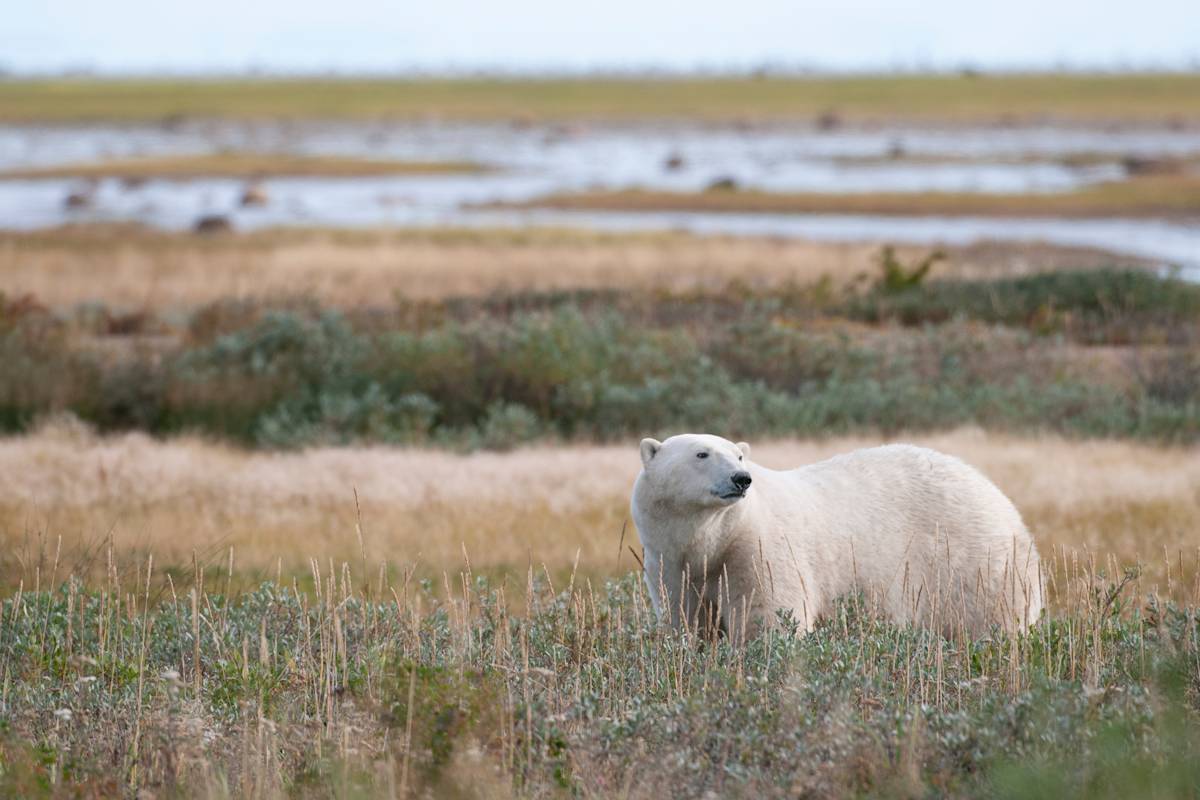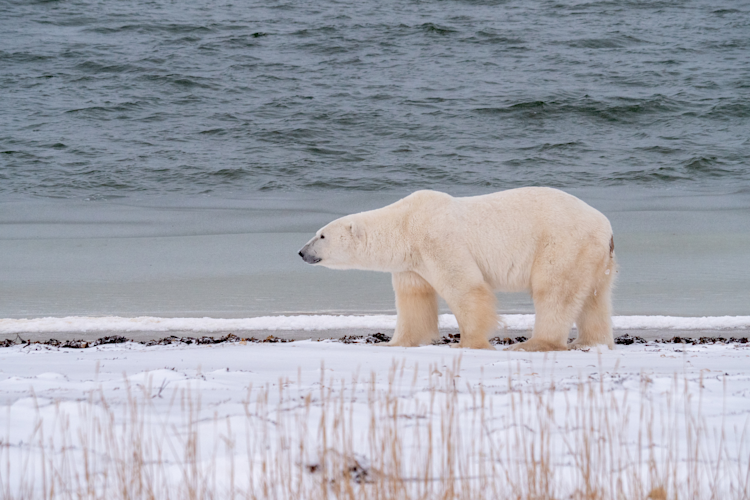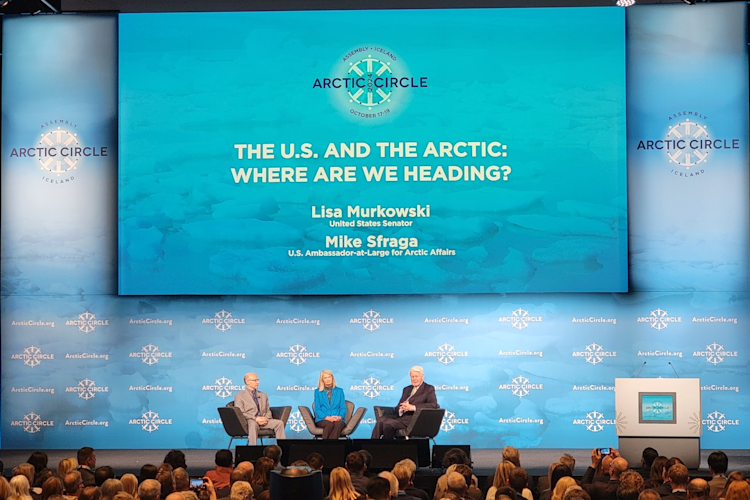Every summer, the sea ice in Hudson Bay melts and the polar bears that live in this region come on land. As the earth has warmed, Arctic regions have experienced 2–4 times greater increases in temperature compared to other parts of the world. In places like Hudson Bay, the sea ice is melting earlier and returning later. This pattern has been repeated in a number of regions occupied by polar bears in eastern Canada where the summers are largely ice-free and polar bears come on land. In other parts of the Arctic, however, polar bears have historically had sea ice available year-round and therefore, spent their lives almost entirely on the sea ice except to den. But as warming has occurred, some bears in these regions are now also summering on land. Thus, even though polar bears occupy a diverse range of sea ice habitats throughout the Arctic, one commonality in their response to sea ice loss has been an increase in land use in the summer and fall.

Photo: BJ Kirschhoffer / Polar Bears International
Can Polar Bears Adapt to Longer Summers on Land?
By Dr. Anthony Pagano and Dr. Karyn Rode
MINS
13 Feb 2024
How do polar bears spend their time on land?
What polar bears do when they summer on land has been a bit of a mystery. Observations have largely suggested that polar bears on land are primarily resting, which has been thought to be a way to conserve energy while waiting for the sea ice to return. But polar bears on land have also been observed feeding on berries, eating birds and bird eggs, and scavenging and preying on caribou. These observations have led to questions over whether these food resources might help sustain polar bears as they spend longer durations on land.
On the Arctic sea ice, polar bears occupy a unique niche catching and feeding on ice-dependent seals. Arctic, ice-associated seals have a dense blubber layer that provides a high energy meal sufficient to sustain a polar bear for about 7–10 days. In the spring and early summer, polar bears can nearly double their body weight feeding on seals. The polar bear’s high-energy marine mammal diet supported their evolution to become the largest bear species in the world. This energy-rich (i.e., high-fat) diet is difficult to replace in a terrestrial environment where available foods consist primarily of proteins and carbohydrates that contain a fraction of the calories relative to their sea ice-based, marine mammal diet.
Previous studies have found that bears lose body weight while summering on land and recent model predictions estimated that some adult polar bears may starve if their time on land exceeds 180 days. However, these studies lacked direct measures of polar bear energy expenditure, diet, and behavior to evaluate the potential for polar bears to meet their energy demands on land through terrestrial foods. Given the potential risk of starvation with forecasted increases in the time polar bears are predicted to be on land in the summer, understanding polar bear feeding behavior and energetics while on land is critical to determining if they can adapt to longer periods on land.
Insights from video-cameras and isotopes
The accessibility of polar bears on land near western Hudson Bay, Canada provided a unique opportunity to better understand how polar bears may be impacted by continued sea ice loss. We monitored twenty polar bears of different sex and ages on land near western Hudson Bay during a three-week period while they summered on land. Bears were weighed at the start and end of the study and wore a video-camera collar that recorded their behavior, diet, and location at regular intervals. We measured energy expended using a method commonly applied in human studies which tracks metabolism via stable isotopes of hydrogen and oxygen.
The bears exhibited a wide range of behavioral responses while on land from resting 98% of the time to traveling up to 330 km (205 miles) over 3 weeks and spending up to 40% of their time foraging on berries. Those bears that were largely sedentary minimized their energy expenditure and burned calories at rates similar to bears during hibernation. Alternatively, bears that were highly active burned five times more calories, but consumed energy from a wide variety of foods including berries, grasses, kelp, and bird carcasses. For example, the daily number of calories burned by adult male polar bears in our study varied by 13,000 kcal after accounting for differences in body weight, which would be equivalent to the energy gained from eating 34 hamburgers.
Although terrestrial foods partially compensated for the higher number of calories active bears used, they did not prevent the bears from losing weight. Ultimately, all the bears, except one individual who found a marine mammal carcass on land, lost about 1 kg (2.2 lbs) per day on average, which highlights that none of these behavior strategies were beneficial for extending the period in which polar bears can survive on land.
Our study highlights that although polar bears exhibit remarkable plasticity in behavior, they remain at risk of starvation with forecasted declines in Arctic sea ice and associated longer periods summering on land. Our next step is to use these data to predict the effects of continued sea ice loss on the reproduction and survival of specific polar bear populations in different parts of their range.
Dr. Anthony Pagano and Dr. Karyn Rode are both research wildlife biologists with the U.S. Geological Survey's Alaska Science Center. Between them they have studied polar bears for more than 40 years.















